| People's Revolutionary Army (Grenada) | |
|---|---|
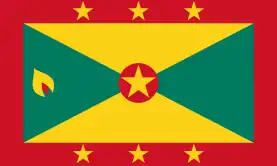 | |
| Active | 1979–1983 |
| Country | |
| Allegiance | People's Revolutionary Government |
| Branch | People's Revolutionary Armed Forces |
| Type | National security |
| Size | 1,200 soldiers |
| Garrison/HQ | Fort George |
| Nickname(s) | PRA |
| Colors | Red and White[1] |
| Engagements | United States invasion of Grenada |
| Commanders | |
| Chairman of the Revolutionary Military Council | Hudson Austin (last) |
| Vice Minister of Defense and Chief of Staff | Major Einstein Louison[2][3] |
| Insignia | |
| Symbol[1] |  |
The People’s Revolutionary Army (PRA) was the military of Grenada between 1979 and 1983. The People's Revolutionary Militia served as its reserve force. The two, alongside the Grenada Police and the Coast Guard, were collectively termed as the People's Revolutionary Armed Forces (PRAF) from 1981.
History
Roots
The PRA traces its roots to the National Liberation Army (NLA), which was formed in 1973 as the military wing of the insurgent New Jewel Movement (NJM) Party.[4] In late 1977, the party dispatched 12 NLA leaders for four weeks of clandestine military training by a unit of the Guyana Defence Force.[5] The group of 11 Grenadian men and one woman were known as "The 12 Apostles." They received intensive training in guerrilla tactics, weapons and other warfare skills in preparation for the overthrow of the government of Eric Gairy.
The near-bloodless coup occurred on the morning of March 13, 1979, on the orders of the NJM's Security and Defense Committee and under the tactical military leadership of key "Apostles." The armed takeover was popularly supported and subsequently became known as the Grenada Revolution.
Foundation and development

After the New Jewel Movement party seized power, the Grenadian army was renamed the People's Revolutionary Army and expanded at a rapid pace. In January 1981, the revolutionary government formed the Revolutionary Armed Forces (PRAF), an umbrella organization that included the army, the militia, the police service, the prison service, the Coast Guard and the fire service.[6] The Grenadian uniformed force far outnumbered the combined police and military of all their Eastern Caribbean neighbors.[7] The Soviet Union and Cuba supplied most of the weapons. Promising soldiers and officers were trained in those countries. By 1983 the Movement was split over who should lead the party forward. Some believe the faction led by Prime Minister Maurice Bishop wanted closer ties with the West, while the faction led by Deputy Prime Minister Bernard Coard wanted to speed up the conversion to a communist state. Others contend the power struggle had more to do with leadership style and rivalry than differences in ideology between the two estranged friends.
The Chief of Staff of the PRA, Major Einstein Louison, was educated at the Vystrel course in the Soviet Union. In March 1983, he met with Soviet General Nikolai Ogarkov, who promised Grenada him that the Soviet Union would contribute to raising the combat readiness of the PRA.[8]
American invasion
On 13 October, the NJM's Central Committee placed Bishop under house arrest after he balked at a power-sharing agreement. Minister of Foreign Affairs Unison Whiteman returned from New York, where he was scheduled to address the United Nations, and instead began to negotiate with Coard for Bishop's release. Over the next few days, pro-Bishop demonstrations occurred throughout the island and a general strike was called in St. George's. On 18 October, demonstrators surged through the city chanting pro-Bishop and anti-Coard slogans while police and PRA soldiers watched. The protests reached a climax on 19 October. Whiteman addressed a growing crowd in the streets of St. George's. The crowd marched to Mount Wheldale to free Bishop from his home. At first, Bishop's guards held their ground and even fired warning shots. Eventually they were overwhelmed and the demonstrators freed Bishop. Bishop, Whiteman and the demonstrators then marched downhill to Fort Rupert to take over the headquarters for the People's Revolutionary Army by sheer weight of numbers.
The PRA leadership called in reinforcements, including 3 BTR-60s and additional troops. Shooting broke out at the fort under disputed circumstances.[9] Three soldiers and eight civilians were killed in the ensuing melee, and about 100 civilians wounded, a 2003 study found.[9] The PRA quickly rearrested Bishop, Whiteman, two other government ministers, a trade union leader and three Bishop supporters. These eight prisoners were subsequently executed by a firing squad of soldiers, bringing the total killed at the fort to 19.
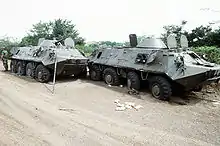
After Bishop's death, Hudson Austin established a Military Revolutionary Council composed entirely of 16 Army officers. Martial law was declared and 24-hour immediate curfew imposed. Violators were to be shot on sight, but none were. The curfew lasted four days and many prominent citizens were arrested. They included former Bishop officials, PRA officers and NJM members thought to be disloyal.[10]
On 25 October 1983, the vanguard of 7,600 troops from the United States, and 350 from the Caribbean Peace Force, invaded Grenada, encountering resistance from the People's Revolutionary Army. On the morning before the invasion, the PRAF mustered a permanent force of 463 men, supplemented by 257 militia and 58 untrained NJM party members.[11] The multinational intervention was also opposed by 636 armed Cuban construction workers under the leadership of 43 Cuban military advisers. The combat was occasionally intense for two days, but hostilities were declared ceased by U.S. forces on Nov. 2, 1983.
A Pentagon historical study of Operation Urgent Fury later reported: "US forces lost 19 killed and 116 wounded. Cuban forces lost 25 killed, 59 wounded and 638 captured. Grenadian forces suffered 45 killed and 358 wounded; at least 24 civilians killed."[12]
By 27 October 1983, most of the Grenadian soldiers had either fled into the jungles or shed their military uniforms in an attempt to blend with the civilian population. Many of these soldiers were pointed out by their opponents to U.S. troops and arrested. The PRAF was disbanded and the island's police force was reconstituted and retrained.
Post-invasion
In 1986, 18 Grenadians were tried by a Grenadian court for the 19 deaths that occurred at Ft. Rupert on Oct. 19, 1983. Seventeen defendants were convicted by a jury of murder or manslaughter, including eight PRA officers and three soldiers. All were imprisoned on the island while supporters waged a long-running campaign to free the so-called Grenada 17. The last of the 17 were released from Richmond Hill Prison in 2009 after serving up to 26 years in prison.[9]
Equipment
The military was mostly equipped with a mix of Soviet, Chinese, and Czechoslovak weapons and vehicles. They also confiscated some weapons from the American military.
Small arms and light weapons
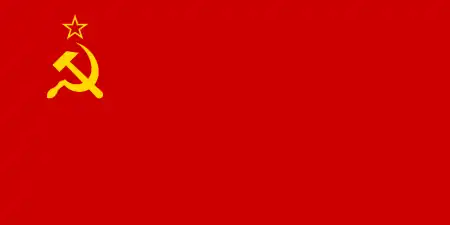 Makarov PM semi-automatic pistol
Makarov PM semi-automatic pistol Tokarev TT-33 semi-automatic pistol
Tokarev TT-33 semi-automatic pistol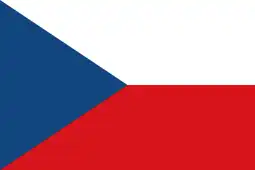 CZ 52 semi-automatic pistol[13]
CZ 52 semi-automatic pistol[13] PPSh-41 sub-machine gun
PPSh-41 sub-machine gun PPS sub-machine gun
PPS sub-machine gun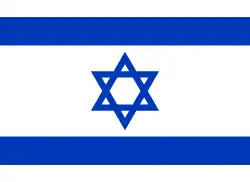 Uzi sub-machine gun
Uzi sub-machine gun Sa vz. 23 sub-machine gun[14][15]
Sa vz. 23 sub-machine gun[14][15] Vz. 52 semi-automatic rifle
Vz. 52 semi-automatic rifle Mosin–Nagant M44 carbine[16]
Mosin–Nagant M44 carbine[16] AKM assault rifle[17]
AKM assault rifle[17] M16A1 assault rifle[17]
M16A1 assault rifle[17] PKM machine gun[18]
PKM machine gun[18].svg.png.webp) Bren light machine gun
Bren light machine gun Vz. 52 light machine gun[18]
Vz. 52 light machine gun[18] DShK heavy machine gun[18]
DShK heavy machine gun[18]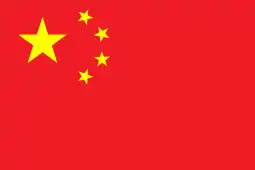 Type 56 rocket propelled grenade launcher[19]
Type 56 rocket propelled grenade launcher[19] RPG-7 rocket propelled grenade launcher[20]
RPG-7 rocket propelled grenade launcher[20] F1 hand grenade[21]
F1 hand grenade[21]
Armoured vehicles
Anti-aircraft guns
Artillery
References
- 1 2 Pool, Gail R. (1994). "Culture, Language and Revolution in Grenada". Anthropologica. 36 (1): 87, 89. doi:10.2307/25605753. JSTOR 25605753.
-shirts featuring a flower with a red circle in the middle. The circle was the symbol of the People's Revolutionary Army (see Anonymous 1982a)... ...At some meetings the flag of the People's Revolutionary Army (PRA), consisting of a single red circle on a white background, was displayed, but most often streamers of triangular flags were hung
- ↑ "Grenada 9797".
- ↑ "Einstein Louison | Caribbean Glossary by the Grenada Revo".
- ↑ Layne, Joseph Ewart (2014). We Move Tonight: The Making of the Grenada Revolution. Grenada?: Grenada Revolution Memorial Foundation. pp. 2–3. ISBN 9781492724582.
- ↑ Coard, Bernard (2020). REDSKY: A Tale of Two Revolutions. Kingston, Jamaica: McDermott Publishing. p. 289. ISBN 978-1654186203.
- ↑ https://www.cia.gov/readingroom/docs/DOC_0000696919.pdf p. 2.
- ↑ Russell, Lee; Mendez, Albert (1985). Grenada 1983. 12-14 Long Acre, London WC2E 9LP: Osprey Publishing Ltd. p. 3.
{{cite book}}: CS1 maint: location (link) - ↑ "Excerpts from Document on Soviet View of Grenada". The New York Times. 15 November 1983.
- 1 2 3 Kukielski, Philip (2019). The U.S. INVASION OF GRENADA legacy of a flawed victory. Jefferson, NC: MCFARLAND. p. 184. ISBN 978-1-4766-3832-4. OCLC 1139352788.
- ↑ Russell, Lee; Mendez, Albert (1985). Grenada 1983. 12-14 Long Acre, London WC2E 9LP: Osprey Publishing Ltd. p. 5.
{{cite book}}: CS1 maint: location (link) - ↑ Raines, Edgar F. (2010). The Rucksack War. Washington, D.C.: U.S. Army Center of Military History. p. 168.
- ↑ Cole, Ronald H. (1997). Operation urgent fury : the planning and execution of joint operations in grenada, 12 october-2 ... Washington, D.C.: U S Govt. Printing Office. p. 6. ISBN 99980-863-0-2. OCLC 948120685.
- ↑ Sylvia & O'Donnell 1984, p. 23.
- ↑ Sylvia & O'Donnell 1984, pp. 28–29.
- ↑ Russell, Lee; Mendez, Albert (1985). Grenada 1983. 12-14 Long Acre, London WC2E 9LP: Osprey Publishing Ltd. p. 44.
{{cite book}}: CS1 maint: location (link) - ↑ Sylvia & O'Donnell 1984, p. 22.
- 1 2 Sylvia & O'Donnell 1984, p. 40.
- 1 2 3 Sylvia & O'Donnell 1984, p. 30.
- ↑ Sylvia & O'Donnell 1984, p. 33.
- ↑ Sylvia & O'Donnell 1984, p. 32.
- ↑ Sylvia & O'Donnell 1984, p. 34.
- 1 2 Russell, Lee; Mendez, Albert (1985). Grenada 1983. 12-14 Long Acre, London WC2E 9LP: Osprey Publishing Ltd. p. 21.
{{cite book}}: CS1 maint: location (link) - 1 2 Sylvia & O'Donnell 1984, p. 18.
- 1 2 3 Ottmar, Reneè (2000). SBS World Guide. Hardie Grant Books. p. 313. ISBN 1876719303.
- ↑ Sylvia & O'Donnell 1984, p. 11.
- ↑ Sylvia & O'Donnell 1984, p. 16.
- 1 2 Sylvia & O'Donnell 1984, p. 15.
Bibliography
- Sylvia, Stephen; O'Donnell, Michael (1984). Guns of Grenada. Orange, VA, 22960: Moss Publications.
{{cite book}}: CS1 maint: location (link)
Further reading
- Grenada 1983 by Lee E. Russell and M. Albert Mendez, 1985 Osprey Publishing Ltd., ISBN 0-85045-583-9